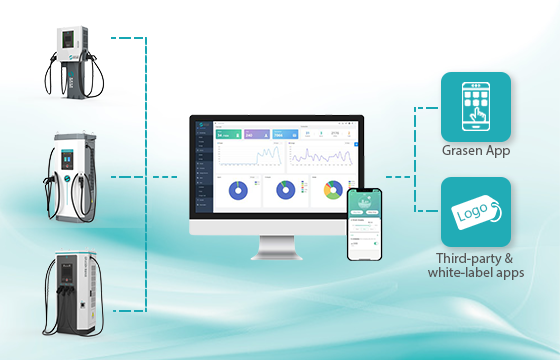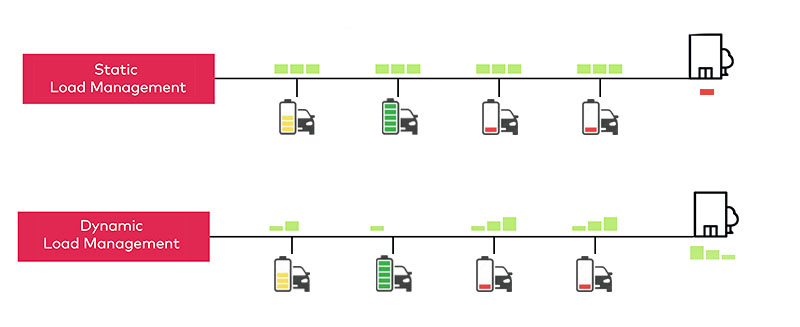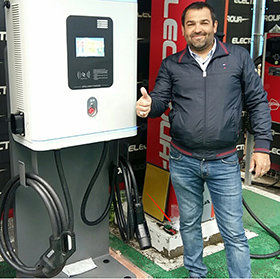Today Grasen will walk you through how EV charging load management works, and what you should know to take the best advantage of load balancing.
To keep pace with the growing demand for electric vehicles (EVs), load management has become a buzzword in the industry. Load management refers to balancing the demand for energy throughout the day, reducing the burden on the grid and optimizing EV charging.

At the macro level, load management ensures a balanced power distribution across multiple sites such as individual charging ports, fleet depots, residential buildings, or public parking lots. This process reduces energy usage during peak demand periods, thereby reducing the potential strain on the grid.
At the micro level, load management involves shifting the charging session for a single charge point to a time when energy is less expensive. When EVs use multiple charging points, load management balances the power to ensure that vehicles are charged efficiently.
Load balancing systems are capable of directing electric vehicle chargers to dispense the appropriate quantity of energy. They offset peak demand at the charging site level.
The load management software for EV charging maintains a continuous line of communication with the electricity infrastructure, charge stations, and plugged-in electric vehicles.
With the increasing demand for EVs, load management will play a vital role in shaping the future of sustainable transportation.

EV charging load balancing can be static (based on the time or day) or dynamic, where it adjusts energy consumption in real time and redirects it to areas of greatest need. EV load balancing can react to changes, such as vehicle arrivals and peak demand, or to requirements known in advance, such as overnight charging requirements for an EV fleet.
Load balancing maximizes charging site efficiency and customer satisfaction by ensuring that each charge point has the right amount of energy to service each vehicle. Load balancing ensures that charging stations are always available for users, reducing wait times and ensuring a seamless charging experience.
Through load balancing in EV charging, the charging service provider can source electricity from the grid during low-demand periods and store it on the premises, effectively meeting peak customer demand without incurring high utility rates during peak hours.
A charging station management system lets the charging site operator control how much power each station can use when multiple EVSE units are connected to the same circuit. The chargers will automatically follow the pre-set protocol to balance electricity usage by each EVSE.
Load-sharing EV chargers provide stations with a steady stream of power in one of two ways: even distribution or first-in, first-charged.
With equally distributed load sharing, each EV charger gets the same amount of electricity. If the electrical panel provides 80 amps and four 40-amp chargers, each charger will receive an equal amount of 20 amps. The three active chargers will get 26 amps if one charger leaves.
With first-in, first-charged load sharing, power distribution to the EV chargers depends on when charging begins. Using our four 40-amp charging station example, the first station would charge its EV customer at full capacity, while the second would get what’s left. If additional power remains after the needs of the first two stations are met, the third vehicle will get that. Once the first vehicle left, its load would move to the third vehicle, and any overage would begin charging the fourth station.
Deciding on the best type of load sharing depends on how you want chargers to be used. Fleet managers usually want to charge all vehicles at once over a longer period, so they would use equal distribution. On the other hand, an apartment manager wants tenants to finish charging as soon as possible to make room for other tenants to use the station, so they would use first-in, first-charged.
With the increasing demand for EVs, load management will play a vital role in shaping the future of sustainable transportation.

-- Marcus Groll,A Charging Station Owner in UKRAINE
Start your EV charging station businesses with Grasen. For a no-obligation quote, hit the button below, fill in your details, and we’ll get back to you.
